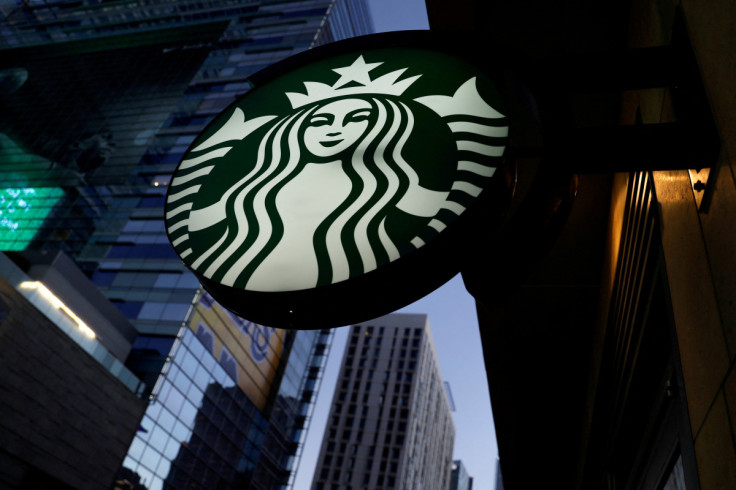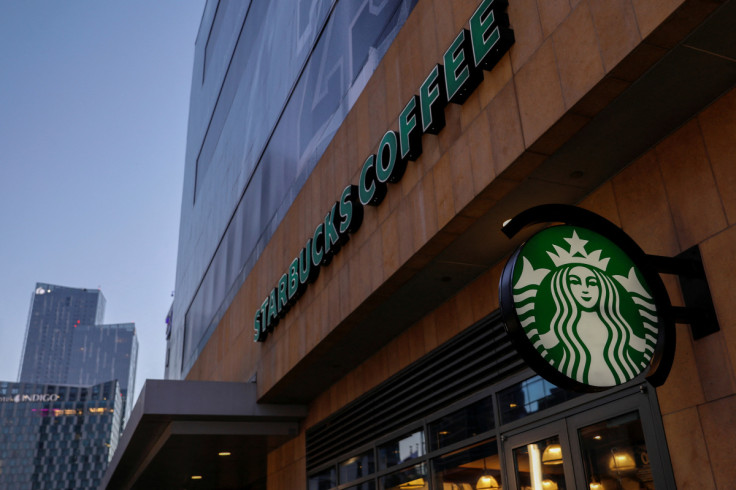Starbucks Exploring Tech To Ease High U.S. Demand, Worker Stress

Starbucks is exploring developing technology to prevent U.S. cafes from becoming overwhelmed by too many orders as it seeks to revitalize its business and improve working conditions for employees, the company said on Tuesday.
A surge in digital orders, which now make up nearly a quarter of all orders, has helped the coffee chain gain market share during the COVID-19 pandemic but has also led to barista burnout and strained the physical capacity at older stores.
The company is exploring "load balancing" technology that can send orders to stores that have capacity to actually fulfill them - instead of to stores already being slammed by drive-thru customers, for instance, Chief Technology Officer Deb Hall Lefevre said in an interview with Reuters.
"REINVENTION" OF STARBUCKS SINCE PANDEMIC
The pandemic changed customer behavior, leading to a deluge of mobile, delivery and drive-thru orders, as well as an increase in cold beverages and customized coffee drinks.
Calling it a "reinvention," the company laid out details during Investor Day on Tuesday of a sweeping plan spearheaded by interim Chief Executive Officer Howard Schultz, who will be replaced by Laxman Narasimhan in April.
The plan calls for new equipment that heats food faster and with less plastic waste, new store designs with larger shelves for picking up orders and additional employee benefits.
A new system for iced coffee drinks shaves nearly a minute off the time it takes to make a Mocha Frappuccino, down to 35 seconds. Baristas would no longer need to haul a bucket of ice to the station every hour because the ice will be automatically fed into the new equipment.
The company will spend $450 million to modernize North American cafes in 2023. By 2025, it will add 2,000 net new U.S. stores and add some delivery-only locations, it said.
UNION BACKDROP
Employees at 236 stores voted to join a union over the past year, out of Starbucks' nearly 9,000 corporate-owned U.S. locations. Conversely, 52 stores voted against unionizing, according to National Labor Relations Board data.
Frank Britt, brought in by Schultz to lead the company's transformation strategy, said workers know how to solve the company's problems because they are on the front line.
"A lot of the concerns the partners have, whether they're affiliated with the union or not, are valid concerns. We agree, there's a trust deficit," he said in an interview.
Union members have been holding protests this week to bring attention to their demands. Billie Adeosun, a Starbucks employee since 2015 who works at a unionized location in Olympia, said on Monday higher wages were a top priority.
The company has lifted pay to an average of nearly $17 across non-unionized U.S. locations. Starbucks says the law prohibits it from offering increased benefits to unionized workers without bargaining over them.
"We know that these benefits or higher wages... wouldn't even exist without unions," said Adeosun, who makes $15 an hour. "We've been able to shine a spotlight on this company and show that they're not the liberal company they claim to be."

© Copyright Thomson Reuters {{Year}}. All rights reserved.




















